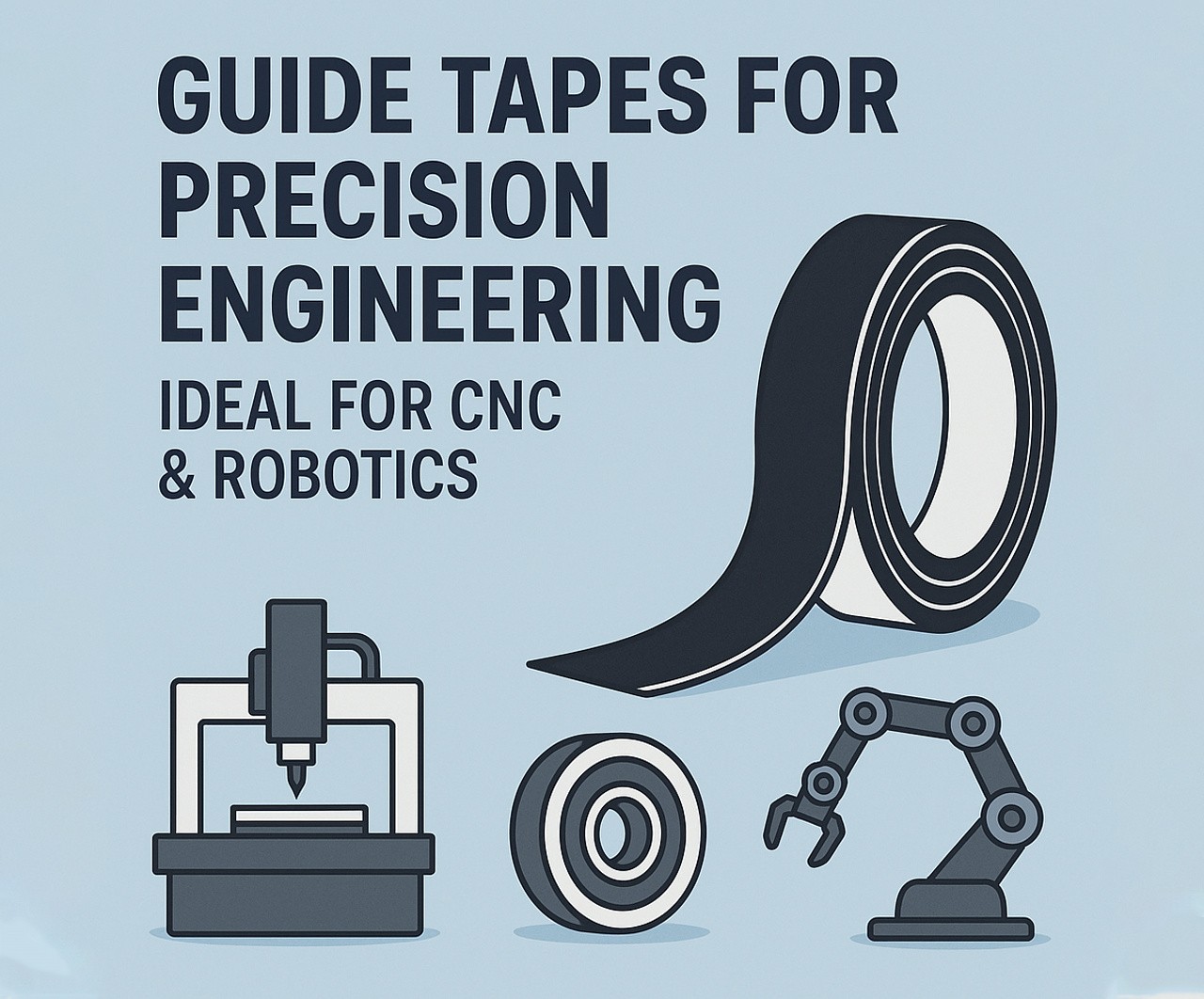In the rapidly evolving world of precision engineering, the integration of advanced materials and technologies is paramount. Among these, guide tapes have emerged as indispensable components, especially in CNC machining, robotics automation, and precision motion control systems. These elements not only enhance the accuracy and efficiency of operations but also play a crucial role in ensuring the longevity and reliability of machinery. Know more..
Understanding Guide Tapes in Precision Engineering
Guide tapes are specialized components designed to provide precise guidance and alignment in various mechanical systems. Their primary function is to ensure smooth and accurate movement of machine parts, reducing friction and wear. In the context of CNC machining, these tapes are vital for maintaining the exact positioning of tools and workpieces, thereby ensuring high-quality outputs.
In robotics automation, guide tapes facilitate the seamless movement of robotic arms and components, allowing for intricate tasks to be performed with high precision. Similarly, in precision motion control systems, they contribute to the accurate control of motion paths, essential for applications requiring meticulous attention to detail.
The Role of Guide Tapes in CNC Machining
CNC machining relies heavily on the precision and stability provided by guide tapes. These tapes ensure that the cutting tools and workpieces maintain their intended paths, minimizing deviations that could compromise the quality of the final product. By reducing vibrations and ensuring consistent alignment, guide tapes contribute to the production of components with tight tolerances and superior finishes.
Moreover, the durability of guide tapes means they can withstand the rigorous demands of CNC operations, including exposure to cutting fluids and high-speed movements. This resilience translates to reduced maintenance requirements and longer service life for CNC machines.
Enhancing Robotics Automation with Guide Tapes
In the realm of robotics automation, guide tapes are integral to achieving precise and repeatable movements. Robotic systems often perform tasks that require exact positioning and smooth transitions, such as assembly, welding, or material handling. Guide tapes facilitate these operations by providing a stable and low-friction pathway for robotic components.
The use of guide tapes in robotics also contributes to energy efficiency. By minimizing resistance and ensuring smooth motion, these tapes reduce the power consumption of robotic systems. Additionally, their ability to absorb shocks and dampen vibrations enhances the overall performance and longevity of robotic equipment.
Precision Motion Control: The Backbone of Accuracy
Precision motion control systems are fundamental in applications where exact movements are critical, such as in semiconductor manufacturing, medical devices, and aerospace engineering. Guide tapes play a pivotal role in these systems by ensuring that motion paths are followed with utmost accuracy.
The integration of guide tapes in motion control mechanisms allows for smoother transitions and reduces the likelihood of errors caused by mechanical imperfections. This precision is essential in industries where even the slightest deviation can lead to significant issues or product failures.
Selecting the Right Guide Tapes for Your Application
When choosing guide tapes for specific applications, several factors must be considered:
- Material Compatibility: Ensure that the guide tape material is compatible with the operational environment, including exposure to chemicals, temperatures, and mechanical stresses.
- Load Capacity: Select guide tapes that can handle the expected loads without compromising performance.
- Durability: Opt for tapes with high wear resistance to ensure longevity and reduce maintenance needs.
- Friction Coefficient: Lower friction coefficients are preferable for applications requiring smooth and rapid movements.
- Installation Requirements: Consider the ease of installation and compatibility with existing systems to minimize downtime.
Innovations in Guide Tape Technology
Recent advancements in material science and manufacturing techniques have led to the development of guide tapes with enhanced properties. For instance, the incorporation of composite materials has resulted in tapes that offer superior strength-to-weight ratios, making them ideal for high-speed and high-precision applications.
Additionally, surface treatments and coatings have been introduced to further reduce friction and increase resistance to environmental factors. These innovations not only improve performance but also extend the service life of guide tapes, offering better value over time.
Maintenance and Best Practices
To maximize the benefits of guide tapes, regular maintenance and adherence to best practices are essential:
- Routine Inspections: Regularly check for signs of wear, damage, or misalignment.
- Proper Lubrication: Use appropriate lubricants to reduce friction and prevent premature wear.
- Clean Environment: Keep the operational area free from contaminants that could affect the performance of guide tapes.
- Training: Ensure that personnel are trained in the correct installation and maintenance procedures to avoid mishandling.
Conclusion
Incorporating guide tapes into CNC machining, robotics automation, and precision motion control systems offers numerous advantages, including enhanced accuracy, efficiency, and equipment longevity. As technology continues to advance, the role of guide tapes in precision engineering will undoubtedly become even more significant. By understanding their functions and maintaining them properly, industries can achieve higher productivity and maintain a competitive edge in their respective fields.



